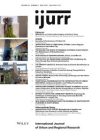This article considers the social aspects of daily mobility, which is studied as a social product, based on significant family strategies and social practices. Our analysis shows the importance of variables such as the lifecycle of households, class trends and family networks as well as class, gender and generational sub‐cultures. The different forms of daily mobility are seen to be linked to other social strategies (residential, labour, sociability, etc.) that create a varying range of social situations. Urban and mobility policies, urban dispersion, greater automobile use and new trends in the socio‐technical organization of cities exert a great influence on these unequal social positions, promoting new forms of exclusion and social risks. Based on the study of a medium‐sized city in Southern Europe (Pamplona‐Iruñea, the regional capital of Navarra), which is developing fast from a concentrated pattern to one of residential dispersion based on greater automobile use, an analysis is carried out into how family mobility strategies tie in with different sociological profiles. The study aims to provide interesting theoretical and methodological reflections on mobility that will be of use to professionals, institutions and civil movements working in the field of mobility regulation.
Details
Written by:
LUIS A. CAMARERO, JESÚS OLIVA
Digital Object Identifier (DOI)
10.1111/j.1468-2427.2008.00778.x
About DOI
Read full article as PDF
Read full article as HTML
See the references for this article
